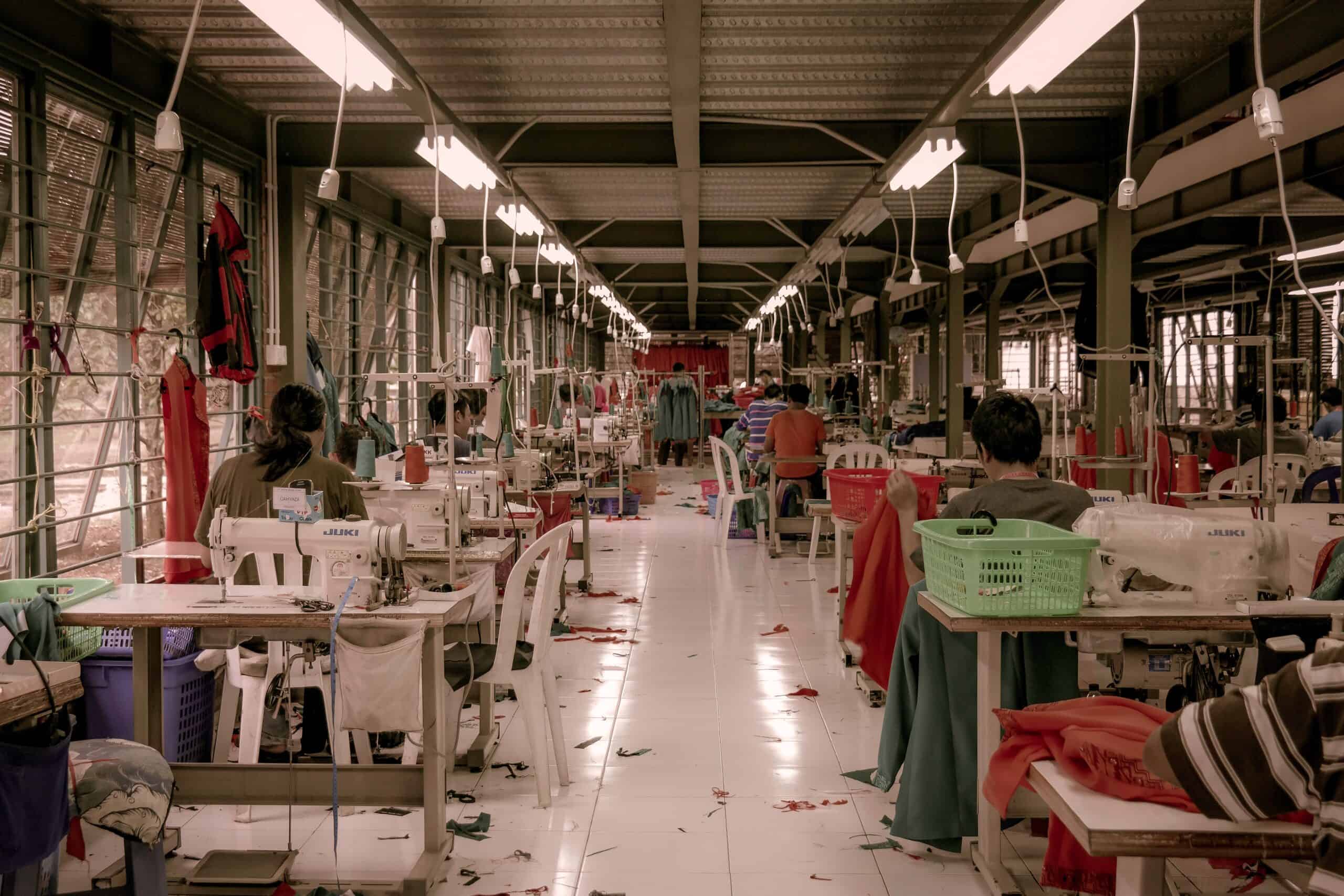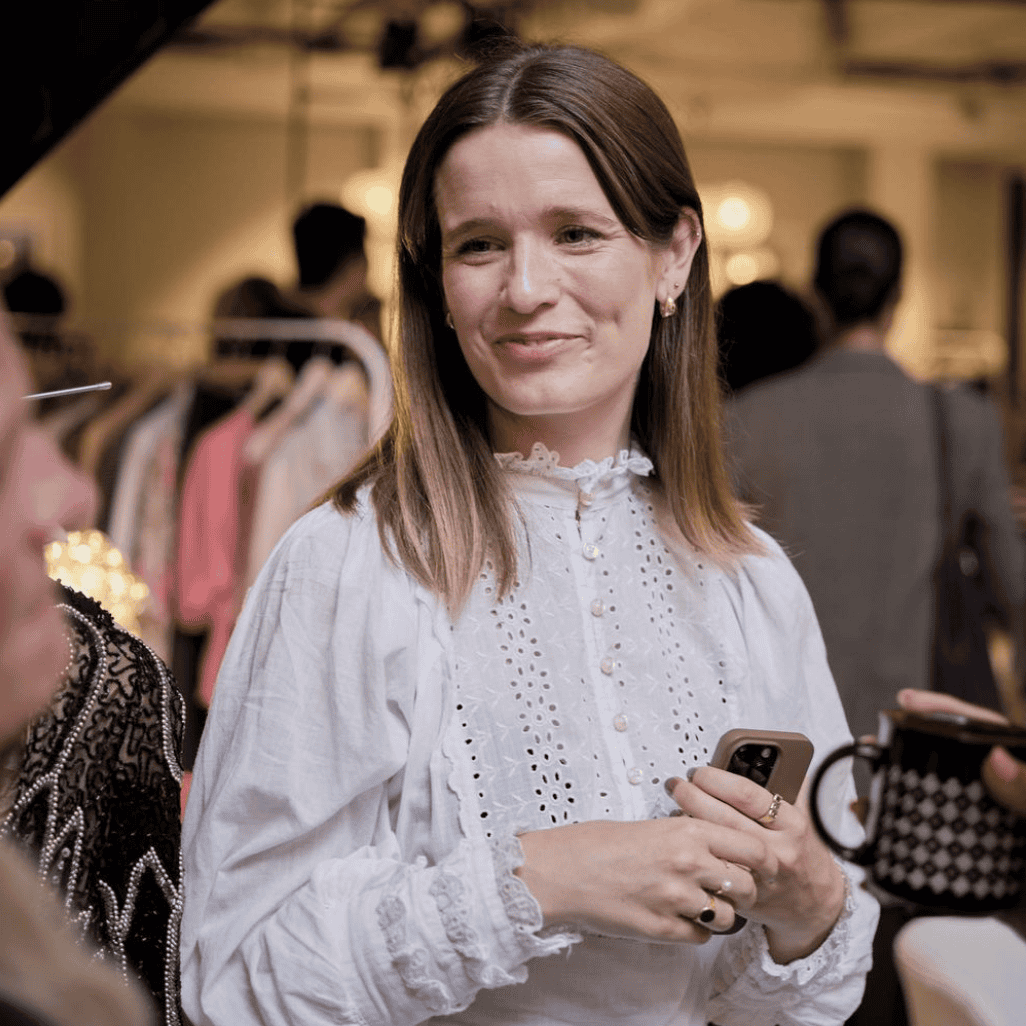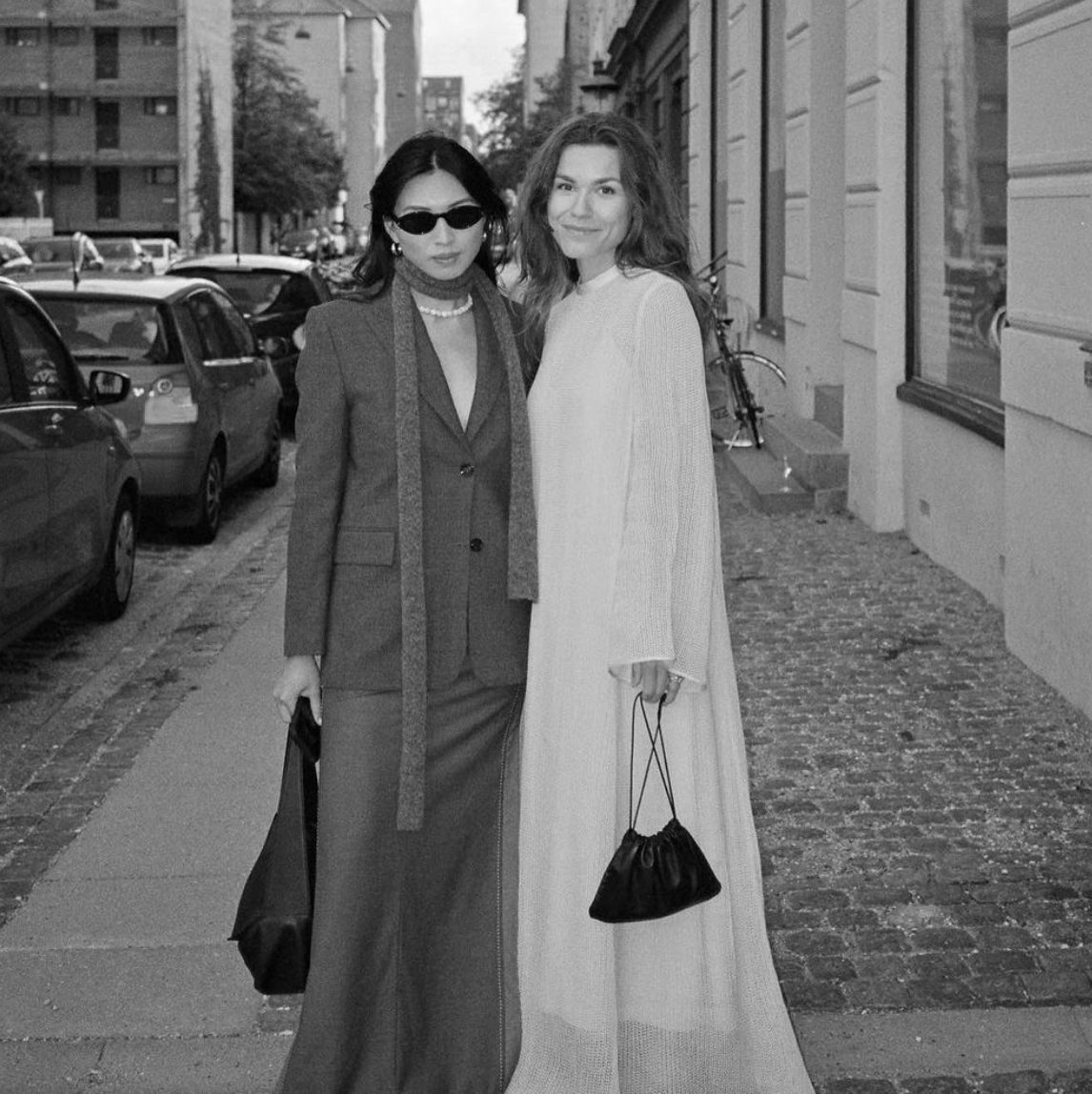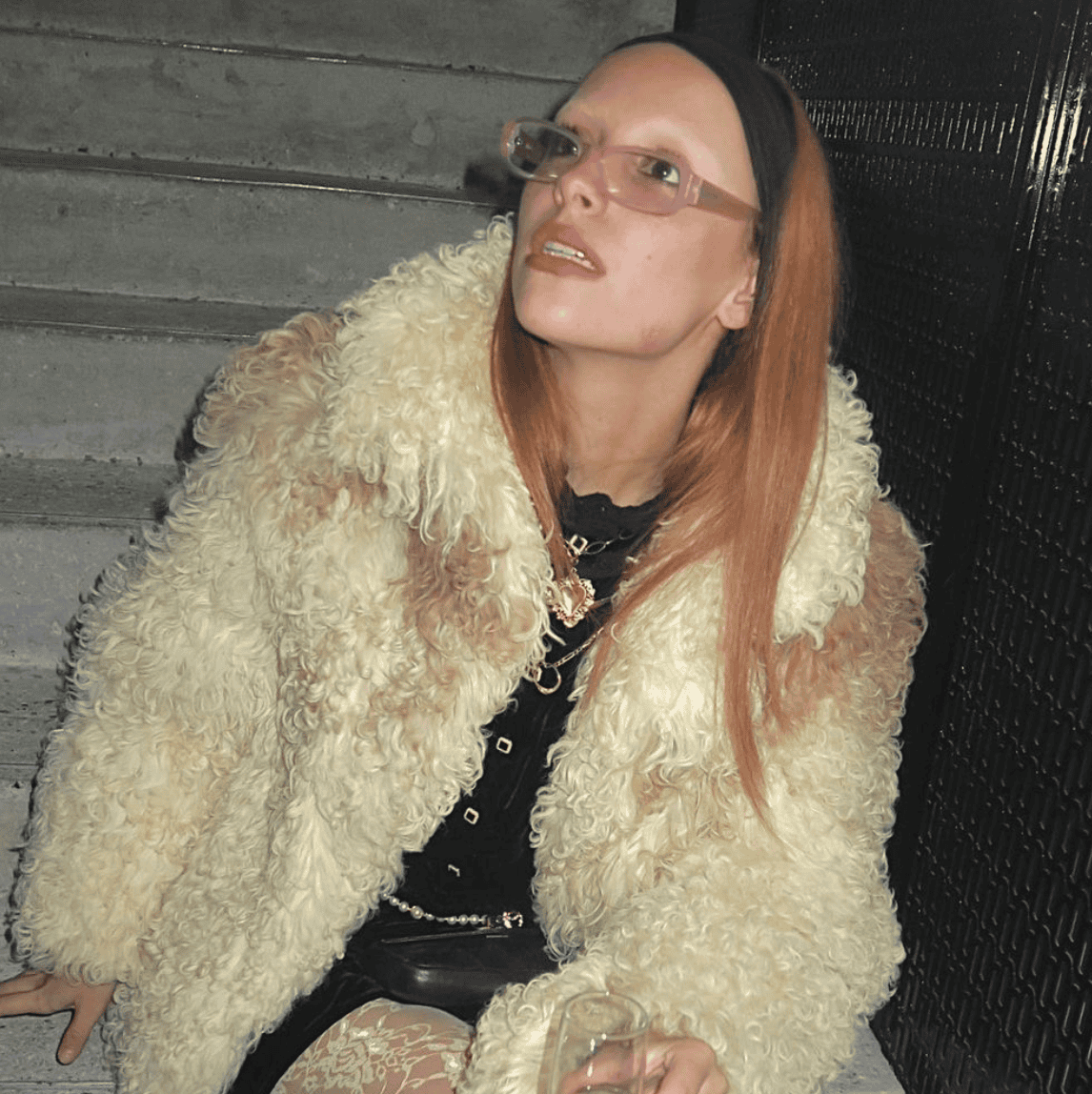Sustainable Fashion Through a Circular Lens
Although the world of fashion and its glamorous facade may seem intriguing to many, its less elegant backside shows that over 500 million tons of textiles end up in landfills every year. With ‘overconsumption’, ‘ultra-fast fashion’, and ‘disposable culture’ as new additions to the dictionary, the need for a slower pace in a fast-moving business has never been greater. As the clothing industry continues being singled out as a scapegoat for numerous environmental issues, it is increasingly evident that a transformation in current practices is not just a question of if, but when. Standing at the breaking point of the fashion industry’s ground zero, one might wonder what will be the key ingredients to rewriting history into a new, more circularly oriented tomorrow.
This article will dive deeper into the topic of circular fashion, exploring how the ever-expanding movement is changing the rules of sustainability on several parameters. VOCAST spoke to slow fashion enthusiast and entrepreneur Ingrid Bergtun, and she shared her broad knowledge and personal perspectives on the present, and the future of the industry.
Get to know Ingrid Bergtun

She is the Co-Founder of Fæbrik, a company consisting of four passionate ‘sewing junkies’ on a mission to inspire the general public to think green into their clothing consumption. Recently, Fæbrik hosted Norway’s very first secondhand festival, which made it clear that Ingrid and the rest of the team are not only here to change, but to revolutionize the established industry format.
Photo credit: Arne Næsset.
Exploring the status quo
Sustainability in the fashion sector is more relevant than ever, but it still presents a complex landscape for brands and consumers to navigate. Ingrid reviews the current state of the industry and describes the process flowing straight from production to consumption and, ultimately, disposal. Following the structure of a ‘take-make-waste’ mindset, a garment’s fate is already written in the early stages of production. This model, as highlighted by Ingrid, drives people to purchase new clothing manufactured in low-quality materials that are not eligible for recycling. Overall, the existing system feeds into a throwaway culture, and prioritizes rapid consumption at the expense of environmental protection, which Ingrid emphasizes:
“The production of garments involves significant natural resource consumption and emissions, and when the clothes are not being used, it inevitably contributes to a growing waste problem.”
Alternatively, a circular framework seeks to round out the edges, where the well-being and longevity of the garment are extended and carefully considered at every step of the circuit. Briefly explained, circularity involves closing the loop of overconsumption and favors recycling, reusing, and repairing clothes to prevent the clothing from ending up in a one-way street towards the bins. Ingrid points out that pursuing a more holistic strategy can be beneficial in various aspects, the most important being summarized as the reduction of textile waste, promotion of ethical practice, and reduction in environmental footprints.

Breaking Barriers
Gen-Z has been labeled the “conscious consumers”, bringing both money and mind into their consumption habits. With a wave of wokeness flourishing, brands are meeting the needs of the market by integrating greener themes into their products and services. But although as many as nine out of ten younger consumers are demanding brands to address environmental challenges, caring about sustainability is not necessarily synonymous with caring about sustainable fashion. In the end, there is still missing a clearly marked terminus for turning thoughts into reality. Being able to harmonize two conflicting approaches, where maximizing sales is opposed to the idea of minimizing waste, calls for a change of heart. So how do we unlock the doors to circularity, and what barriers are currently blocking the front gate?
Fully living out our green values can only take us so far, where it truly takes two to tango on the path toward a circular fashion economy. Utilizing the dynamic relationship between customers and brands, Ingrid expresses that trademarks shouldn’t be afraid to vocalize their sustainable beliefs or implement environmentally friendly measures into their practices:
“Some brands may hesitate to join the conversation due to the fear of being accused of greenwashing. However, with genuine intentions and a commitment to take responsibility, you can never go wrong.”
Quite simply, brands must start embracing transparency and inviting customers along their eco-friendly journeys. As the saying goes; nobody’s perfect, and introducing honesty into sustainability discussions could prove to be a strategic move – not shying away from showcasing imperfections. Being open about your brand’s current circumstances, even if they aren’t ideal, can also signal to customers that there is a safe space for a trial-and-error mentality. Given that the word ‘guilt’ is often associated with sustainability, engaging in a vulnerable dialogue can therefore help lower the threshold for making more conscious choices. These types of unfiltered conversations can help restore a sense of humanity back into an issue that profoundly affects humans.
Besides, brands must dare to think outside the A4 box. Ingrid stresses the crucial pivot point for brands to take accountability for their products both before and after they leave the warehouse shelves. Achieving this means ensuring that the garment is well equipped in durable armor, for a long and happy life with its new owner. Should any age marks or signs of life appear along the way, Ingrid explains that brands must be prepared to offer repairs or support customers with instructions on how to fix things independently. Manageable steps like this can nurture a deeper connection between the customer and their clothes, leading to them loving and cherishing their pieces for longer.
“People need new clothes every now and then, and if consumers are aware of certain brands that offer repair services, or do-it-yourself guidance, they are more likely to choose those brands again.”
Living in a material world
Fashion is without exception found in every corner of the world – on the floor behind the pink curtains of a little girl’s room, or in a messy drawer in her big brother’s wardrobe – blooming in the streets on a busy Monday morning, or buzzing around on an all-too-late Friday evening. It’s a way to wear what we feel inside, on the outside of our canvas. But with endless possibilities for how these feelings can be portrayed, in all imaginable silhouettes, textures, and colors, we’re ultimately unsure of how they should look. The relentless pace of new styles has led to what can only be described as “fashion fatigue,” leaving us exhausted from the constant cycle of keeping up. Recognizing fast fashion as a prominent force working against a more sustainable, circular system is one of the most important pieces of the puzzle. As the latest campaign by the sustainable Swedish clothing brand Asket so well phrases it; Fuck Fast Fashion for making us feel left out, unless we buy in. By capitalizing on the FOMO (Fear of Missing Out) tendencies thriving amongst the youth, fast-fashion companies are contributing to keeping the line of the linear system straight. All things considered, these businesses are creating a mismatch in today’s society between the urge to fit in and the need for sustainability, hiding the true cost of a trendy piece behind low prices. We may soon start asking ourselves; is a fast-fashion detox the only answer? Diving into this fascinating paradox, we asked Ingrid if she thinks we can harmonize trends with sustainability, and she replied as follows:
“Absolutely. Many of today’s fashion trends are actually inspired by styles from the past. So instead of buying new clothes that mimic old ones, why not just buy and wear the original vintage pieces?”
Suggesting that the trends themselves seem to be going nowhere, Ingrid hints that maybe we just need to look elsewhere to find them. Purchasing second-hand items is a precious reminder that sometimes old clothes just need a change of scenery – a new set design to find themselves in a new plot with reinvented purposes. Besides, Ingrid articulates the importance of preserving the enjoyment and childish fun of dressing up, yet in today’s fast-fashion environment, this often carries an unpleasant aftertaste. She further explains how buying used often requires a tad more effort, whereas the opposite is easier, cheaper, and more accessible, but tends to leave consumers struggling with an inner conflict.
“Buying fast fashion is like eating candy. You know you shouldn’t eat a lot of it, but when it’s right in front of you, it’s not always easy to resist the temptation.”
The internet has also created a new, virtual world in sustainable fashion to exist in. Between computer screens, iPhone scrolling, Wi-Fi, and algorithms, one can discover environmentally-oriented content creators that possess a particular purchasing influence. Ingrid conveys that these influencers play a big part in upping the ‘coolness factor’ of buying pre-loved clothing, and says that collaborating with profiles through attitude- and sustainability campaigns is a good way for brands to tap into their customers’ green values.

Photo credit: Copenhagen Fashion Week/Tonya Matyu – STAMM
Just like looking at an abstract work of art or recalling a bizarre dream, fashion is open to individual interpretation. Simultaneously shared by all and owned by none. Treasuring these unique understandings, where clothes serve as an outlet for self-expression, does not need to compromise with the concept of an eco-friendly fashion scene. Ingrid maintains an optimistic outlook, noting some of the exciting and positive developments taking place in the sustainability arena. She hopes that people are prepared for a sweeping shift, envisioning a sustainable fashion framework that fosters opportunities rather than constraints.
Meet the sustainable content creators
Browse through a selection of some of the top profiles within sustainable fashion, available through VOCAST’S curated lists:
Eager to learn more about sustainability in fashion? Read our previously published article discussing relevant topics such as greenwashing, slow fashion, and sustainable marketing – in conversation with the founders of two conscious brands based in Scandinavia. Access the article HERE.
References: Good On You: What is Circular Fashion? Asket: Fuck Fast Fashion. Weavabel: How can fashion brands transition from a linear to a circular economy? Zalando: Attitude-Behavior Gap Report.
SIGN UP TO OUR NEWSLETTER
Get free knowledge on how to optimize your B2B marketing & new product releases.
RELATED POSTS
The Art of Slow Living: When Thoughtful Choices Redefine Design
With a fast-paced everyday life, the principles of slow living stand in a sharp and perhaps comforting contrast. As the movement progresses, more people are integrating the values of slow living into all areas of their lives – from slow food to slow fashion and slow...
Mastering Sustainable Branding in Interior Design
In recent years, the appeal of trendy marble coffee tables, plush sofas, and finely designed lamps has captivated us all. While the interior design industry often embodies craftsmanship, it also has a less glamorous side: its environmental impact. This reality has...
Beyond the Aesthetic: The Emergence of Stylists as Influencers
In the realm of interior design, stylists, recognized for turning creative visions into captivating editorial and commercial projects, are increasingly emerging as key influencers on social media. The rise of digital platforms has substantially redefined their roles,...













